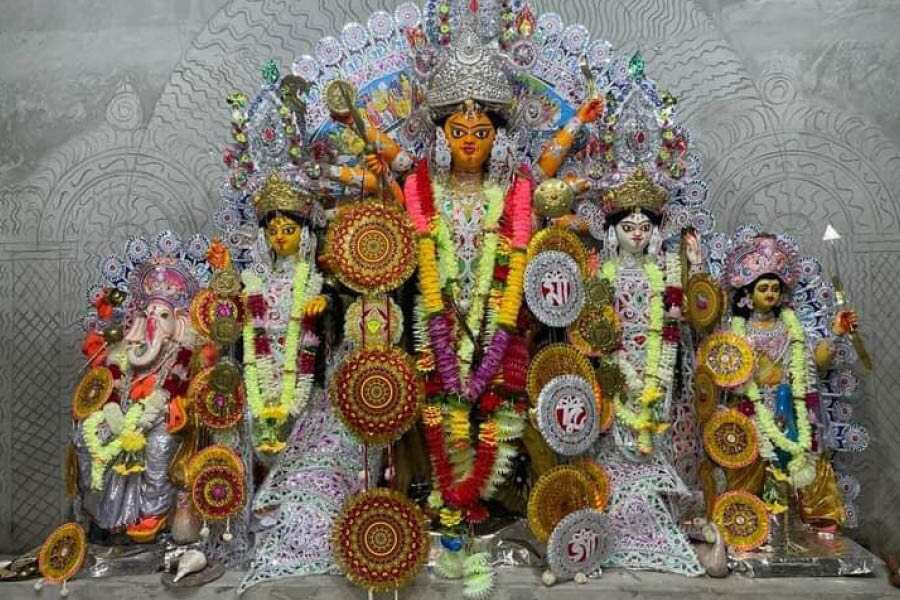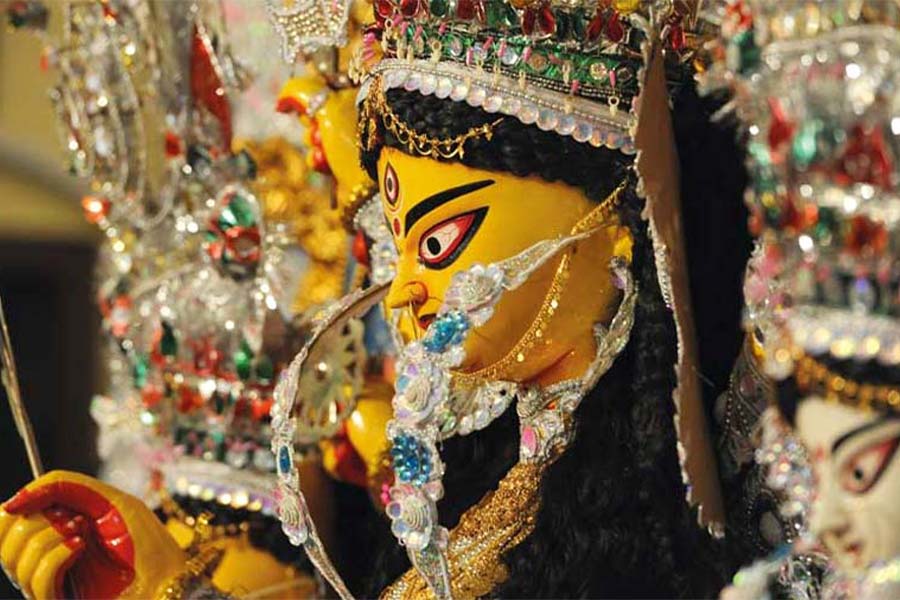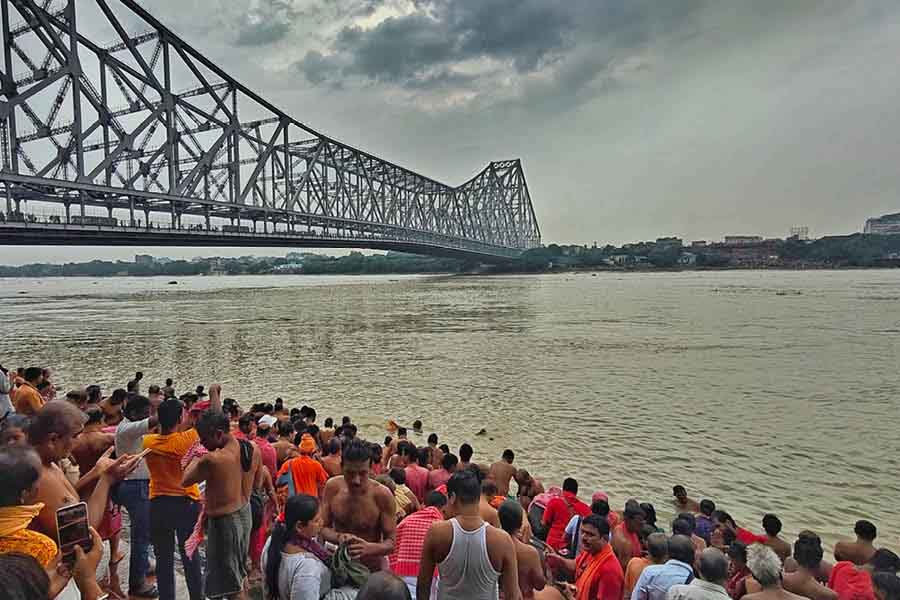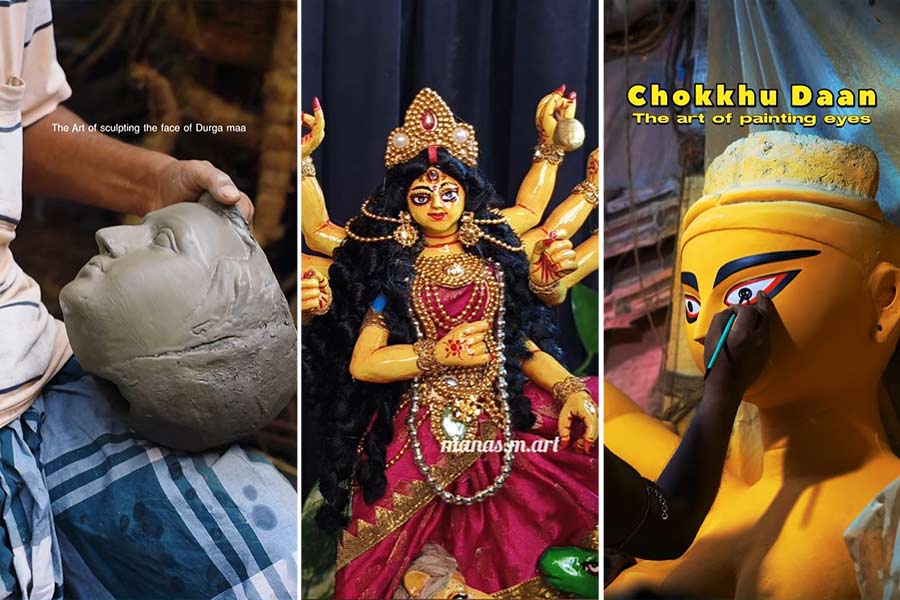Forceful migration from East Pakistan not only uprooted people and their homes but also many social and religious practices to this side of the Bengal border, where they evolved through the decades.
The village of Ashuganj in Mymensingh district of East Pakistan (now Bangladesh) was once a big trading centre situated on the bank of river Meghna, where Budhai Saha, whose roots were in Talshahar, Bramanberia of Comilla district, had amassed huge wealth from jute business, warehousing and small-scale mills.
Success and prosperity hand in hand
By the end of the 19th century, Saha had built a business house by the name of Budhai & Company at Bhairabhbazar of Ashuganj and had three huge mansions in Bhairabhbazar. He soon became one of the most influential persons in the village.
His four sons proved their brilliance in business and added more fortune to the family by the end of the 19th century.

Two photographs from the Saha family Durga Puja in earlier times
From 1880, one of his sons, Gaganchandra Saha, started Durgotsav at one of his mansions, which had an in-house temple, naat mandir, chandi mandap and huge provisions used to be made to accommodate more than a thousand people during festivities. The puja became so big that nearly 4,000 people used to feast for three days at the Saha family puja. It is believed that many renowned singers, musicians and political leaders used to visit this puja.
Gagan Chandra Saha and his brothers started expanding the family business beyond Bhairabhbazar and soon took it to (then) Calcutta and even till Karimganj and Guwahati in Assam.
In the early-1940s, thanks to their massive fortune earned from the stocking and distribution business in salt, oil seeds, mustard oil, jaggery and betel nuts among many other things, the family owned two huge mansions in the heart of Calcutta. By that time, Gaganchandra’s son, Radhikamohan, and his cousins became leaders of their family business.
In 1945, they built a huge five-storeyed building at 20 Jadunath Mallick Lane in Pathuriaghata and soon built one more at 6 South Sealdah Road.

The younger generation of the Sahas take part in the festivities wholeheartedly
Shift across Bengal border
A large part of the family, including two of the four sons of Radhikamohan Saha, moved to Calcutta in 1947 and from that year, their family Durgotsav was also shifted to 20 Jadunath Mallick Lane. However, their huge business set-up remained operational in East Pakistan under the supervision of their Muslim employees till 1971. After the liberation of Bangladesh, the Saha family lost everything to all those whom they had trusted for ages. Since then, the Saha family cut off all connections with their ancestral home and settled in Calcutta.
The puja in Jadunath Mallick Lane continued only till 1951 before the house was sold because of a bitter legal battle. Within a few years the other house at 6 South Sealdah Road was also gone as a result of legal battles among family members.
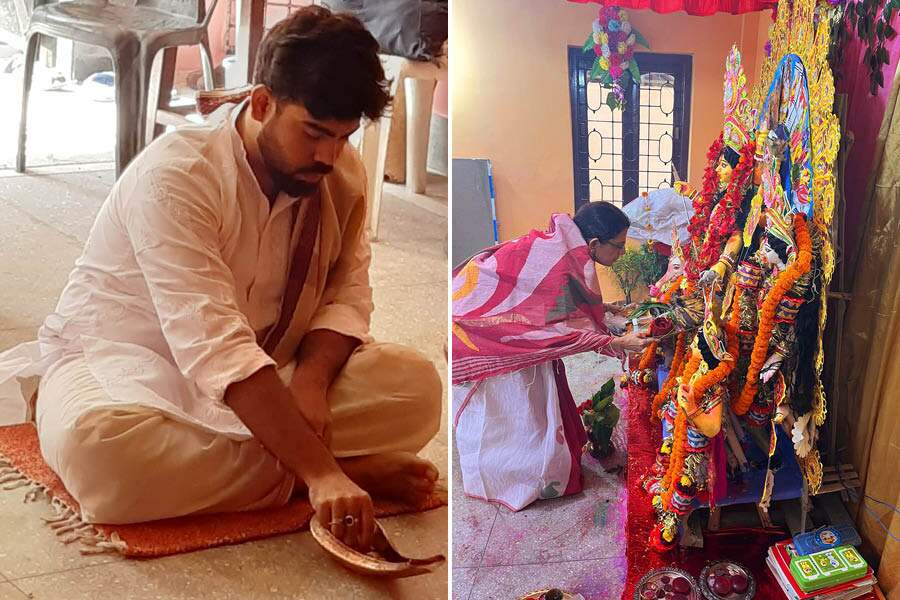
Durga is invoked in this family as the daughter and she is worshipped according to pure Vaishnav rituals
Radhikamohan bought a huge house at 25 Syed Amir Ali Avenue in Park Circus in 1950 from one Mohammad Ali Chowdhury, an aristocrat who was then in a hurry to move to Pakistan by disposing of his properties in India.
The Saha family puja started at Park Circus in 1952 and continued till 2014. Thereafter, more divisions in the family forced the puja to move to its present location in Tagore Park near Ruby Hospital on the EM Bypass.
Mammoth scale of puja at Ashuganj
Eighty-seven-year-old Raichand Saha still has vivid memories of his family Durga Puja in undivided Bengal. He recollects that on Rath Yatra day, the work of making the Durga idol used to start with the worshipping of Lakshmi and Ganesh. On Mahalaya, a special puja is still performed as a prelude.
The family puja in Ashuganj used to attract large crowds, both rich and poor. Nearly 4,000 people used to attend the puja daily and a jatra pala (a rural form of performing theatre) used to be organised under gas light on the puja days.

Members of the family take part in the puja rituals - from fetching water from the Ganga to ‘dhunuchi naach’ to lighting of the 108 diyas
Durga is invoked in this family as the daughter and she is worshipped according to pure Vaishnav rituals. There is no cult of animal sacrifice before the goddess and no non-vegetarian bhog is offered to her.
Family members eat only vegetarian food during Puja except on Bijoya Dashami when they consume fish after immersion.
Widows are allowed to take part in the puja.
Unique feature
Male members are not allowed to offer pushpanjali on Saptami and Ashtami but only on Maha Navami as soon as the yajna is over. However, women of the family are allowed to offer pushpanjali on all puja days.
The puja has now shifted to Raichand Saha and his four daughters who organise it every year with their husbands and children. In that sense, this is perhaps one of the very few family pujas of Bengal, which is performed by womenfolk of the family. It is a celebration of womanhood in the truest sense.
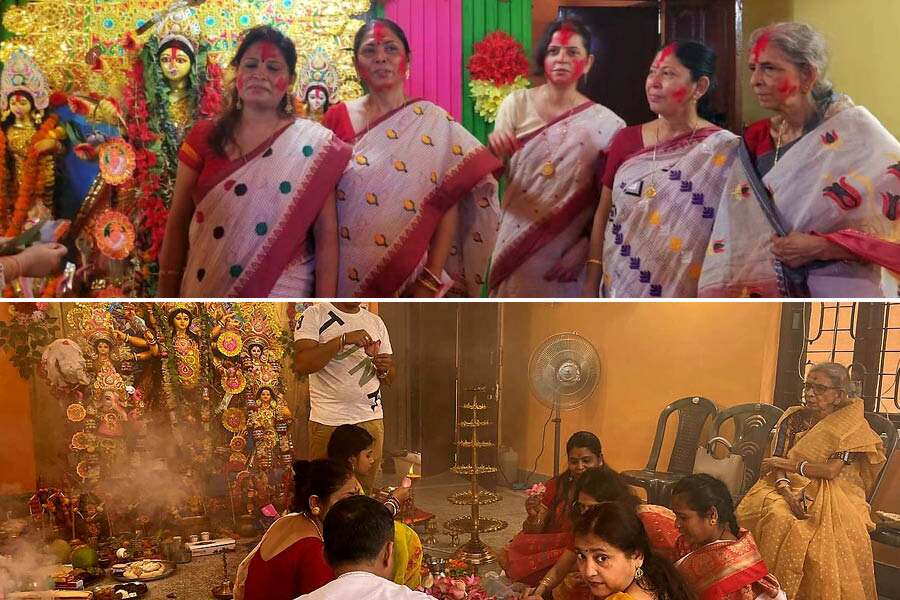
It is perhaps one of the very few family pujas of Bengal, which is performed by womenfolk of the family
Jayati Das, one of the daughters of Raichand Saha, says though the scale of celebrations is much reduced now but the festive mood is still high. “Our relatives now reside in faraway lands like Germany, Australia, Canada, Saudi Arabia and many corners of India but surely try to come to the family puja almost every year and that is what helps maintain the rich heritage of the Saha puja from Ashuganj.”
Revelation
The senior-most living member of the family, Raichand Saha, adds another nugget to the puja. He claims that their house in Park Circus, where puja was performed for more than 50 years, was the erstwhile residence of Mohammad Ali Bogra, who later on became the Prime Minister of Pakistan.
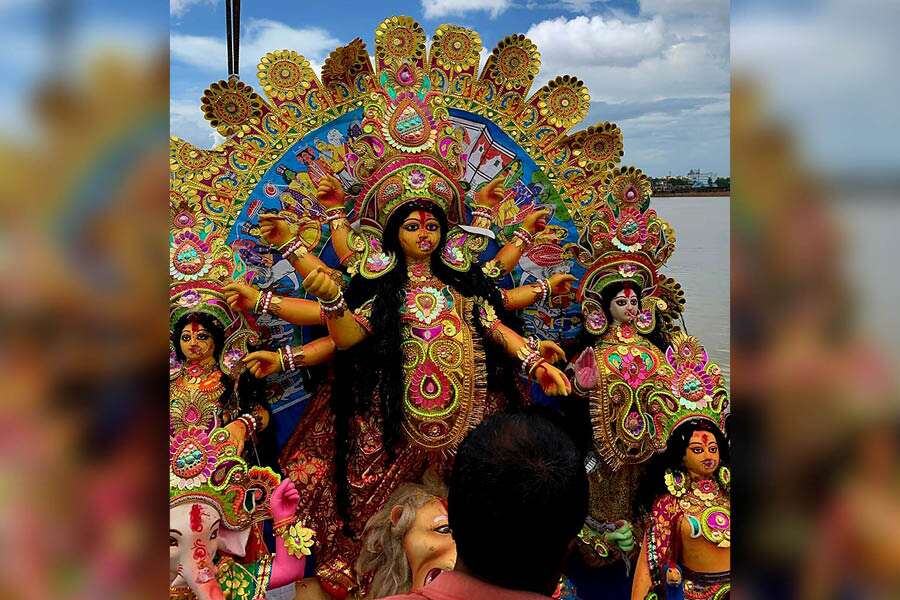
Family members eat only vegetarian food during Puja except on Bijoya Dashami when they consume fish after immersion
However, no evidence was produced by the Saha family to support their claim. If proved, it would mean that the residence of a former Prime Minister of an Islamic country went on to become the abode of Durga, who was uprooted from her original home in Bangladesh.

